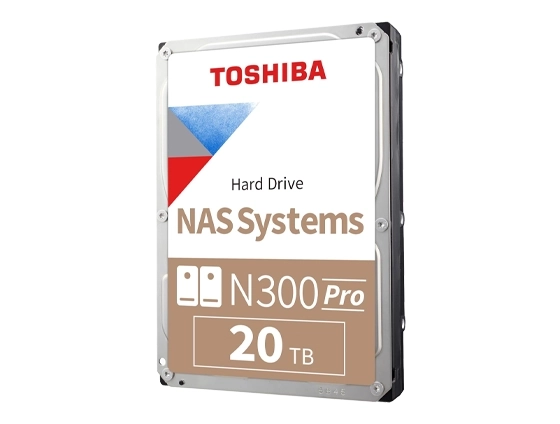A small business owner in Manhattan recently faced a serious storage issue that disrupted daily operations. Her Toshiba N300 NAS configured in RAID 1 for redundancy suddenly became inaccessible. The system had always worked reliably, so the sudden loss of access came as a shock.
The NAS contained crucial business data including financial records, invoices, and customer information, all vital for keeping the company running. When both drives stopped responding, it quickly became a major concern.
Although the owner knew RAID 1 was designed to protect against drive failure, the complete inaccessibility of the system showed that something more serious had occurred and required professional recovery assistance.

Business Impact and Data Importance
The failed Toshiba N300 NAS held data that was essential to the company’s daily functions. Among the files were financial statements, tax documents, and client records that supported every aspect of the business. Losing access to these files meant losing the ability to continue normal operations.
Without the stored data, accounting processes were halted, client communication was interrupted, and key projects faced delays. The incident highlighted how a single NAS failure could put an entire small business at risk.
For the owner, every hour without access to the system increased the pressure to find a reliable data recovery solution that could restore all information safely and accurately.
To better understand such scenarios, see our detailed guide on Reasons for RAID Data Loss.
Customer’s Attempt to Restore Data
After the failure, the business owner tried several troubleshooting steps to bring the NAS back online.
She checked the network connections, restarted the device, and even attempted to connect each Toshiba N300 drive directly to a computer. However, none of the drives were recognized.
Hoping to fix the problem quickly, she searched online for possible recovery methods. The more she tried, the clearer it became that the issue was more severe than a simple configuration error. Each failed attempt risked worsening the condition of the drives.
Realizing the data was too important to lose, she decided to stop further attempts and contact professionals who specialize in RAID and NAS recovery.
Realizing the data was too important to lose, she decided to stop further attempts and contact professionals who specialize in NAS data recovery.

Technical Evaluation and Identified Problem
After receiving the Toshiba N300 NAS drives, our engineers performed a full diagnostic process to identify the root cause of failure. The evaluation involved several key steps:
Visual Inspection: Each Toshiba N300 HDD was examined in a clean environment to detect any visible physical or electronic damage.
Drive Status Testing: Specialized equipment was used to check the drives’ read/write functions and SMART parameters without altering the data.
Identification of Head Crash: One drive showed clear signs of a head crash, preventing the heads from reading data from the platters.
Impact on RAID 1 Mirror: The second drive had developed read errors due to repeated synchronization attempts after the first drive failed.
Preparation for Physical Recovery: Both drives were scheduled for controlled cleanroom recovery to safely extract the data without further deterioration.
This systematic evaluation allowed our engineers to understand the extent of the damage and determine the safest approach for full data recovery.
Learn more in our post on Rebuilding RAID 1 After Drive Failure.

Fast turnaround times for business-critical data
Our Professional Data Recovery Process
Once the issue was identified, our team at RAID Recovery Services followed a structured recovery procedure to ensure every piece of data was safely retrieved.
The damaged Toshiba N300 drives were opened inside our ISO-certified cleanroom to prevent contamination during head and platter inspection.
Compatible donor parts were used to replace damaged heads. Each drive was then imaged sector by sector to create safe working copies.
Using the healthy drive images, our engineers rebuilt the RAID 1 configuration virtually to restore the original data structure.
Once the array was successfully rebuilt, data was extracted and verified for completeness and consistency.
The recovered files were transferred to a secure storage medium and delivered to the client after validation.
This process ensured full recovery while maintaining data integrity and confidentiality throughout every stage.
To explore similar recovery operations, visit our NAS Data Recovery Case.

Recovery Outcome and Key Takeaways
The recovery of the Toshiba N300 NAS drives was completed successfully. All financial documents, customer information, and operational records were fully restored without any data corruption. The client reviewed the recovered files and confirmed that every critical folder was intact.
This case shows that RAID 1 configurations, while designed for redundancy, can still fail completely if not handled properly after one drive is damaged. In many cases, controller or synchronization errors make the system inaccessible, as seen in our RAID Controller Failure Recovery case study.
To avoid similar issues, businesses should:
Regularly monitor NAS drive health and replace aging drives early.
Maintain off-site backups of essential data.
Seek professional help at the first sign of drive failure.
RAID Recovery Services continues to help companies prevent data loss and recover valuable information from failed RAID systems.
Trust the experts with proven results
Frequently Asked Questions
What causes Toshiba N300 NAS drives to fail in a RAID 1 setup?
Toshiba N300 NAS drives can fail due to head crashes, power surges, overheating, or prolonged vibration in multi-bay systems. Even though RAID 1 provides redundancy, both drives can become inaccessible if one fails and the system continues repeated rebuild attempts.
Can data be recovered from a Toshiba N300 NAS after a head crash?
Yes, recovery is possible when handled by professionals in a cleanroom environment. Specialists can replace damaged components, create drive images, and reconstruct the RAID to restore data safely.
Should I try to rebuild my Toshiba N300 NAS RAID 1 at home?
It is not recommended. Attempting a rebuild or running recovery software can worsen the damage or overwrite recoverable data. Contacting professional engineers ensures the safest recovery process.
How long does professional NAS data recovery take?
The time varies depending on the damage type and number of drives. For cases like this Toshiba N300 NAS, recovery typically takes between 2 and 5 business days after the evaluation is complete.
Where can I get Toshiba NAS data recovery services in New York?
RAID Recovery Services provides expert RAID and NAS data recovery throughout New York. Our specialists handle complex failures for Toshiba N300 and other NAS systems securely and efficiently.